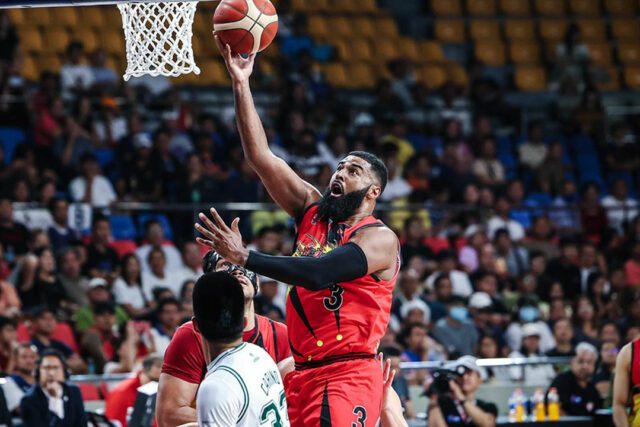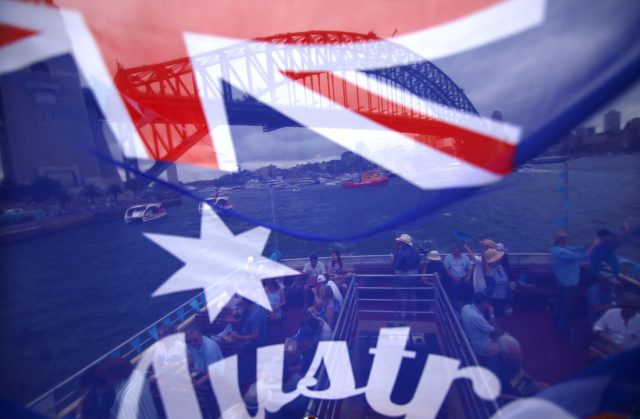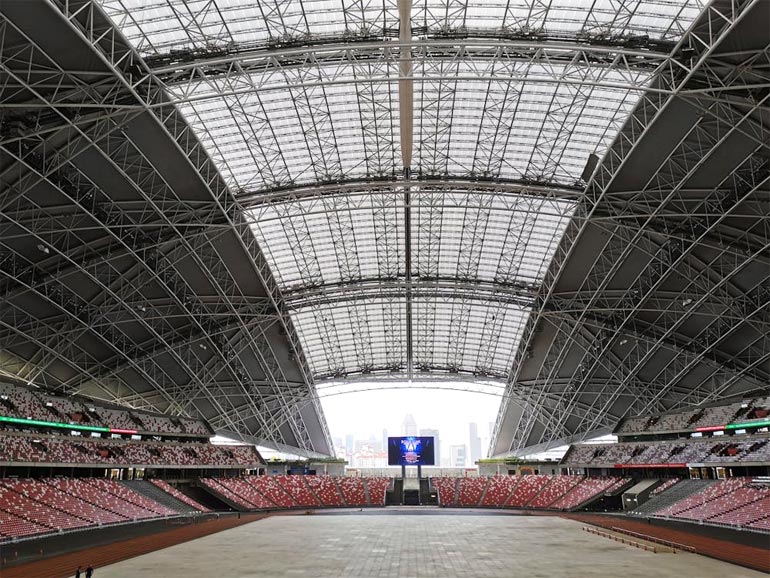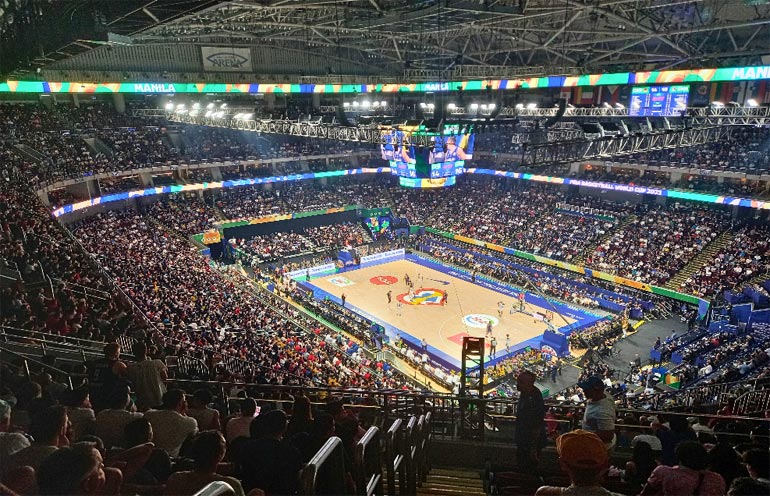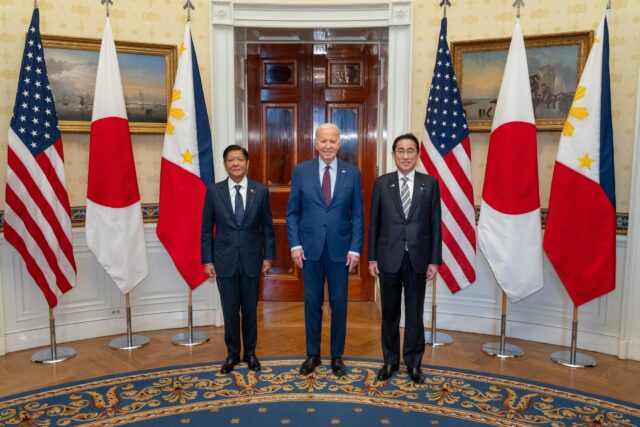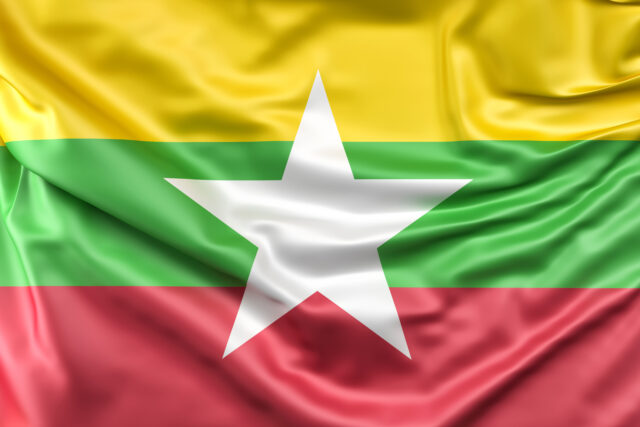MYAWADDY, Myanmar – Myawaddy, a critical trading post in Myanmar that rebel forces seized from the ruling junta last week, offers a glimpse of dynamics playing out across the Southeast Asian country as its vaunted military reels from battlefield losses.
At the border town’s outskirts, the site of the most intense fighting, abandoned homes sat next to buildings pockmarked with bullet holes, gas stations damaged by blasts and structures flattened by airstrikes, Reuters reporters saw on a visit this week.
Rebels who fought against junta troops in Myawaddy described a demoralized military that was unwilling to hold its ground.
“We managed to seize three bases and control the area in a very short period of time,” said Saw Kaw, a commander of a rebel unit involved in the battle for Myawaddy. “Then, they fled.”
Guards from ethnic militias until recently loyal to the military administration roamed streets in the town – normally a conduit for over $1 billion of annual border trade with nearby Thailand. Those fighters stood aside when forces led by the Karen National Union (KNU) laid siege in early April.
Reuters gained rare access to rebel-held territory on Monday and interviewed seven resistance officials for this story, alongside three Thai officials with detailed knowledge of the conflict and four security analysts.
They provided insight into the delicate diplomacy between armed groups with longstanding rivalries as they seek to hold key population centers and keep the junta they want to topple on the backfoot.
The fall of Myawaddy means that Myanmar’s two most important land border crossings are in resistance hands, after the rebels last year claimed control of Muse, near the Chinese border.
Rebel successes have now cut off the cash-strapped junta from almost all the country’s major land borders, with the economy in free-fall and poverty doubling since 2017, according to U.N. data.
The Thailand-based Institute for Strategy and Policy-Myanmar (ISP) think-tank said in an estimate after Myawaddy’s fall that the junta has been deprived of 60% of land-based customs revenue.
It leaves the junta, which has failed to repel any major rebel offensive since October, in its weakest position since its 2021 coup against Aung San Suu Kyi’s elected civilian government, according to analysts.
Neighbors such as Thailand, who were previously focused on engaging the junta, have started to rethink their stance on the conflict.
Thai Vice Foreign Minister Sihask Phuangketkeow told Reuters on Wednesday that Thai security officials have been in communication with the KNU and other groups and that they were “open to more dialogue,” particularly on humanitarian issues.
“We don’t blindly side with the Myanmar military but because we want peace we have to talk to them,” he said.
A junta spokesperson did not respond to calls from Reuters seeking comment.
Junta chief Gen. Min Aung Hlaing has accused rebel groups of seeking to undermine Myanmar’s unity through armed insurgency and his government has called resistance fighters “terrorists.”
The Democratic Karen Buddhist Army and Karen National Army (KNA), the forces still patrolling parts of Myawaddy and its vicinity even after they abandoned the junta, did not return requests for comment. The groups have not pledged loyalty to the resistance.
PATCHWORK OF FIGHTERS
At the western edge of Myawaddy, Col. Nadah Htoo, a senior commander of Brigade 6 of the KNU’s armed wing, one of Myanmar’s oldest ethnic fighting forces, was thinking about next steps after leading the patchwork of resistance fighters that defeated the army in roughly a week.
Surrounded by armed guards as he chewed betel leaves and peered over his Louis Vuitton sunglasses, Nadah Htoo described ongoing talks with other ethnic armed groups about fighting the junta locally. Reuters has also reported that recent coordination between rebel armies in other parts of Myanmar has taken place at an unprecedented level.
For decades, the country of 55 million has been riven by insurgencies along its borderlands, where some two dozen ethnic armed groups operate. Many of them are part of, or supporting, the resistance.
Nadah Htoo and another resistance official acknowledged the challenges of maintaining cooperation over the course of what both expect will be a difficult war against a better-armed military.
“We have to constantly coordinate so there won’t be any mistake,” the colonel told Reuters. He declined to be photographed or filmed until the operation ended, citing security concerns.
In Myawaddy, Reuters observed at least three armed groups coordinating to maintain control, reflecting recent rare cooperation among rebel forces that share a common enemy in the junta but otherwise have different interests.
Most of the rebels who took Myawaddy were ethnic Karen, though they fought along some ethnic Burman members of the national resistance, said rebel commander Saw Kaw.
“The first thing (is that) we don’t kill each other,” said spokesman Saw Taw Nee of tensions between his KNU and other ethnic Karen groups that were allied to the junta until this month. “And then we start from that.”
MEANING OF MYAWADDY
Last October, three rebel groups, including the powerful Arakan Army (AA), led Operation 1027, a major offensive that saw the resistance take wide swathes of military-controlled areas along the border with China.
“After 1027, we saw the AA in Arakan starting to push. When the AA eased, then we decided to push,” said KNU’s Nadah Htoo, describing how different rebel groups were hitting the military with successive offensives across multiple areas.
The junta “is fighting the war on too many fronts,” said Lalita Hanwong, an assistant professor at Thailand’s Kasetsart University.
“If you look back from the beginning of Operation 1027, the towns that the resistance forces seized have never been regained.”
In the battle for Myawaddy, KNU-led forces encircled the town and pushed the local junta administration to the point of collapse before taking over, said Nadah Htoo.
Reuters couldn’t independently verify the tactics he described. The KNU’s armed wing has previously surrounded junta positions before launching decisive assaults.
Some 200 junta troops remain trapped near a bridge between Myawaddy and Thailand, Nadah Htoo told Reuters, saying they could either surrender to the Thais or the KNU.
The colonel and Bangkok-based security analyst Anthony Davis expect the junta to attempt to retake Myawaddy in the coming weeks to hinder resistance access to an important nearby highway that cuts through the heart of Myanmar.
Some army reinforcements have already been repelled by the KNU en route to the town, and Nadah Htoo said KNU’s political administrator would only take control of Myawaddy after the military operation concluded.
The junta is keen to regain control of Myawaddy, a critical trading centre and its main gateway to Southeast Asia, Davis said.
Around 14% of Myanmar’s total trade via land borders between April 2023 and March 2024 – totaling about $1.15 billion – went through Myawaddy, according to government data.
Control of territory near the borders can also be lucrative: the U.N. and the British government have in the last year accused senior KNA leaders of using territory near Myawaddy to run scam centers and illegal casinos.
Reuters could not determine how resistance forces have deployed the customs revenue collected at border points they control. The ISP think-tank said trade at some crossings was suspended.
END GAME
Losses around Myanmar’s frontiers have increasingly pushed the army into Myanmar’s Buddhist-dominated heartland, once fertile army recruiting ground.
The junta is now ensnared there in a low-intensity conflict with hundreds of militia groups known as People’s Defence Forces (PDFs), many of whom are aligned with the KNU and a shadow administration that includes members of the deposed civilian government.
The junta remains a formidable opponent likely to retain control over government and the heartland, unless there was a mutiny or external intervention, Morgan Michaels of the International Institute for Strategic Studies wrote in a March analysis.
However, military setbacks closer to central Myanmar could cut off the junta’s access to key transport arteries and deal a major psychological blow to its army, already bleeding troops, said Davis, adding that it could “accelerate its retreat and potential collapse.”
Either way, KNU officials, rebel fighters and analysts foresee more violence and no easy victory, even as the resistance pushes to coordinate operations and retain momentum.
“In our country (there are) so many groups and so many differences,” said Saw Taw Nee. “We will take time and we will be united.” – Reuters


